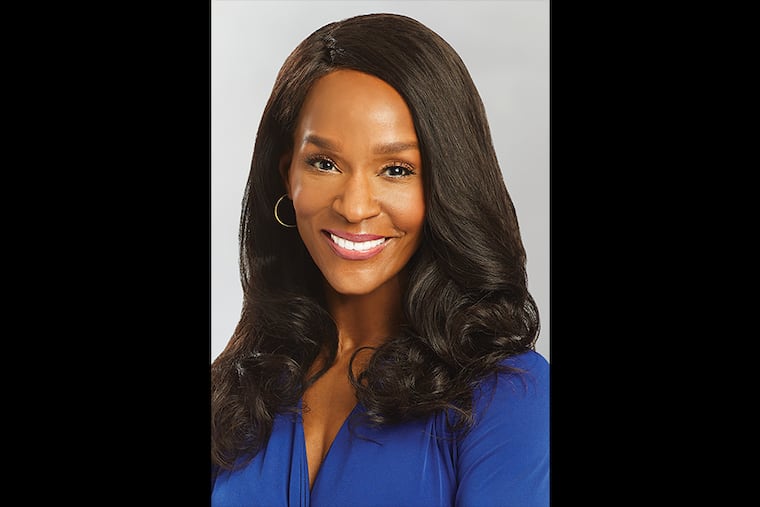‘I’m not gonna lie, it’s scary,’ says 6abc’s TaRhonda Thomas, before surgery for uterine fibroids
The TV reporter said she would be off the air for a couple of months.

In an emotional video posted on social media Wednesday morning, 6abc reporter TaRhonda Thomas said she is undergoing surgery for uterine fibroids and will be off the air for a couple of months to recover.
She said that the condition had become “dangerous” but that she expects to get through it.
“I’m not gonna lie, it’s scary,” she said in the video, shared on Instagram and Twitter.
Fibroids are noncancerous tumors that occur in the uterus. Often they do not cause symptoms. But some patients experience severe pain and bleeding, which can be alleviated with any of several procedures described below.
Thomas did not say what type of surgery she is having, only that it is happening “really soon.” Officials at 6abc said she was not available for an interview.
In the video, Thomas said she had reported on uterine fibroids and knew they are more common among Black women such as her, but never thought she would be stricken by the condition.
“For me, it has become not just inconvenient, but dangerous,” she said in the video, her voice breaking. “I’m thankful that I have three beautiful children, and you know, now is the time to be there for them. Like my mom said, I have to be healthy.”
Here are the basics on the common condition, with an assist from Jay Goldberg, director of the Philadelphia Fibroid Center at Einstein Medical Center, which is part of Jefferson Health:
What causes fibroids?
Physicians are not entirely sure what causes fibroids, though evidence suggests that certain hormones and heredity can increase the risk.
Obesity increases the risk of fibroids, but plenty of slender people such as Thomas develop the condition, said Goldberg, who is not involved in the journalist’s treatment.
“I see many thin women who have fibroids,” he said.
The tumors range in size from being as small as an apple seed to larger than a volleyball. They are common in women in their 30s and 40s, and they tend to shrink after menopause.
What are the symptoms of fibroids?
Fibroids are by definition noncancerous (though in less than one in 1,000 cases, a tumor thought to be a fibroid turns out to be a type of cancer called leiomyosarcoma).
Even though they are benign, fibroids can cause severe symptoms.
In addition to pain and bleeding — which can be heavy enough to cause anemia — the tumors can cause pressure on the bladder and a frequent need to urinate.
Fibroids also can prevent someone from getting pregnant, though Goldberg said sometimes the tumors are large enough that the person may appear pregnant — leading to awkward moments when acquaintances ask, “When are you due?”
“For a woman who’s suffering infertility from the fibroids, that’s adding insult to injury,” he said.
Even for those who are able to become pregnant, the tumors can lead to complications during pregnancy, increasing the chance they will need a cesarean section. The risk depends on the size of the tumors and where they are located, Goldberg said.
How are fibroids treated?
In some cases, fibroids can be treated with medication, including certain birth control pills. If those are insufficient, physicians can treat the condition with one of several procedures.
One is called a myomectomy, in which the physician removes the tumor but leaves the uterus intact — a common choice for patients who wish to maintain the ability to get pregnant. The tumors can sometimes be removed through the vagina, and in other cases are removed through an abdominal incision.
Another option is a hysterectomy — removing the uterus. That option is chosen by patients who want to guarantee that no more fibroids occur in the future.
Yet another possibility is called embolization, in which a physician injects tiny plastic or gel particles into the blood vessels that supply the fibroid, starving the tumor of oxygen so it shrinks. Condoleezza Rice underwent this procedure in 2004, shortly before she became secretary of state under President George W. Bush.
When did TaRhonda Thomas come to Philadelphia?
Thomas joined 6abc’s Action News team in February 2019 after 11 years with Denver’s 9News. She was named 6abc’s first race and culture reporter in March 2021.
Before Denver, she worked in Richmond, Va., Colorado Springs, Colo., and her native Louisiana, where she graduated from Louisiana State University.
In her video Wednesday, she said she hoped her message would increase awareness.
“If you’re the woman out there struggling like I was, and still am, you’re not alone,” she said. “If you’re the praying type, I’d appreciate a few prayers.”
Though she became emotional in the video, she ended it with a bit of humor, noting that she had filmed herself in front of a rack crammed with clothes.
“I promise I will clean my closet,” she said.